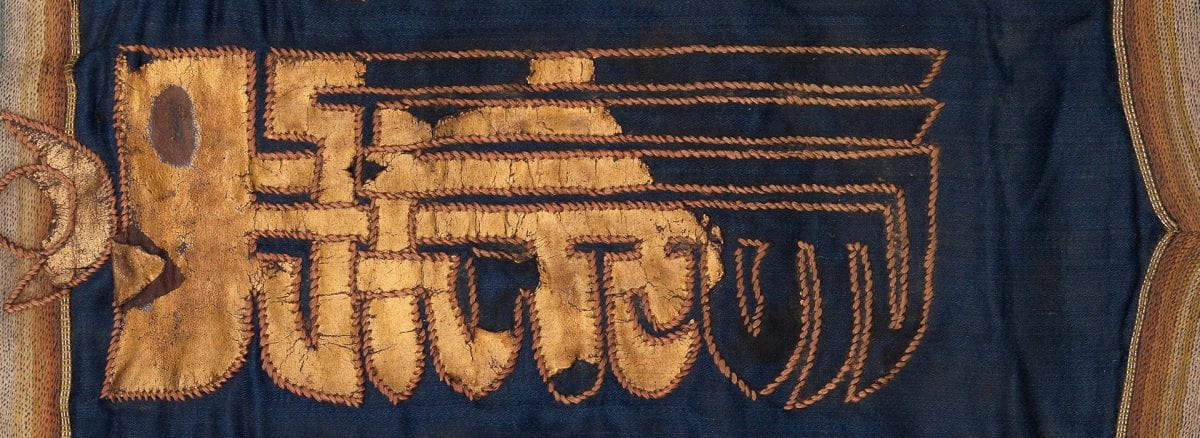Buddhism came to Tibet from India and China in the 7th century, where it gradually integrated with the Indigenous Tibetan religion. Over the ensuing centuries, Tibetan Buddhism became the dominant religion in Tibet, with the Dalai Lama serving its head.
As a fundamental part of his mission, the Dalai Lama regularly travels around the world leading ritual initiations, called Kalachakra initiations. The Kalachakra mantra banner, a ceremonial textile, hangs at these events. Various forms of the banner can also be found in other public places, private homes or almost anywhere Tibetan Buddhism is practiced.

This ceremonial banner fragment consists of gilded leather mantra script appliquéd with metallic thread onto a sateen woven ground. Seven interwoven letters stand for the seven words of the Kalachakra mantra: “Ham Ksha Ma La Va Ra Ya.” The mantra purifies a person’s mind, body, emotions and speech. Through meditation on the mantra, one gains deep knowledge and insight.

The embroidered border was once colorful but is now faded with age. The five colors, always displayed in the same order, represent different elements: blue for heaven, white for air, red for fire, green for water and yellow for earth. These colors are often depicted in the interlaced script of the Kalachakra mantra symbol; however, in this banner the script is appliqued in gilded leather.
The gold details and rare, finely woven silk fabric reflect the banner’s high value and prestige. It would likely have been kept in a protected sacred place such as a temple or shrine, rather than in a home.
